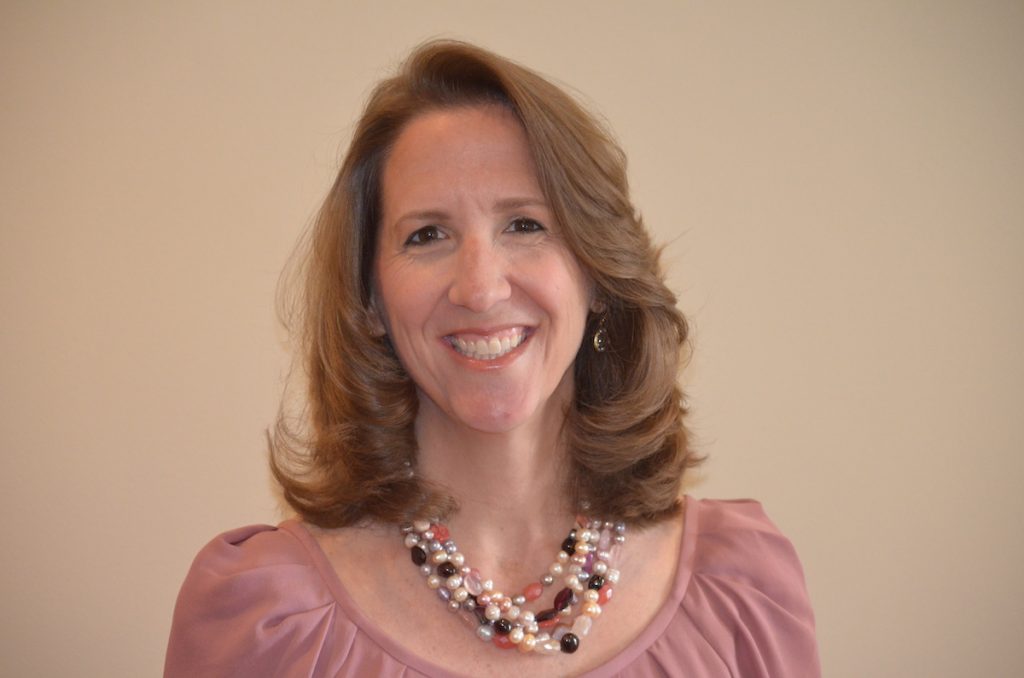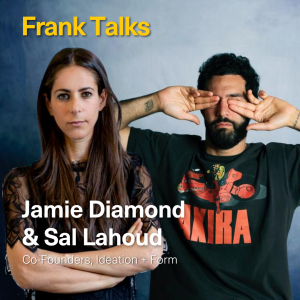This week we chat with Danielle Glosser, who is the Founder and Principal of Client Raiser, a business dedicated to helping artists to increase their client volume and the visibility of their art. Since 2014, she has worked with nearly 100 artists across the country in support of their professional goals. Emerging and established artists alike begin with Client Raiser’s in-depth interview process, which results in a tangible assessment of their art practices and concrete next steps for advancing their careers.
Prior to launching Client Raiser, Danielle implemented social justice initiatives at The White House and in communities across the country that required her to manage complex projects with multiple constituents. Inspired by collecting art, Danielle was exposed to the unique career challenges that artists face and was moved to use her professional skills in strategic planning, project management, research, writing, and networking to support their aspirations. Danielle is a 25-year resident of Washington, D.C. and has led workshops and partnered with arts organizations across the region, including Washington Project for the Arts, Gateway Arts District, Artomatic, District of Columbia Arts Center, Montgomery Arts Association, Capitol Hill Arts League, Washington Sculptors Group, Women’s Caucus for Art and the D.C. Commission on the Arts and Humanities. She was recently selected as a member of ArtTable, a leadership oganization for women in the visual arts. Please enjoy reading Danielle’s Frank Talk below!
What was your first job in the Arts?
My current work helping artists increase their client volume and the visibility of their work, is my first job in the arts. I founded my firm, Client Raiser after a career in the social justice arena. I have a Masters degree in Sociology with an emphasis in race relations and gender issues. My aspiration was to be a diversity trainer, but I soon realized after entering the workforce that the most effective professionals in that field are clinical psychologists. My career path led me from an organizational development firm, to the Clinton Administration, and ultimately to a position as the Director of Public Policy for a nonprofit fighting discrimination across the country. I currently use my skill set of strategic planning, project management, and networking to help visual artists.
What was the most useful or important thing you learned at that job?
The most significant aspect of my current profession is that I have finally found my people. Working with artists has been the most fulfilling experience in a career of memorable jobs. I find most artists to be focused, driven, and smart. Moreover, I am deeply inspired by their passion, creativity, and persistence.
Tell us a little more about yourself. When did you realize you wanted to pursue a career in this industry?
Five years ago, I wanted to start my own business but had no clue as to what it would be. A friend told me to focus on what comes naturally. That was easy to identify – networking. While researching potential markets to share my skill set, our neighbor, a very accomplished artist, asked my boys to serve as models for him. During this process, I realized that visual artists likely could benefit from my strategic planning, project management, and networking skills. I went down to ask my neighbor. Before I said a word about my idea, he asked me to help him with his art practice. Soon I had my first three artist-clients and I’ve never looked back. I have nearly 100 clients in almost a dozen states.
What do you do now?
I help artists in three important ways. First, I work with them on a one-to-one basis to assess the business side of their art practice. All of my clients begin with the Inventory Assessment process that allows me to gain a deep understanding of them, their art, as well as their business practices. The results outline specific suggestions on what to change, add, or eliminate from their practices in order to reach their goals. Second, I provide talks and workshops on practical business advice for artists, often through arts nonprofits. Third, I represent my clients by seeking out new opportunities. For example, by selling their artwork to individual collectors or securing corporate commissions.
Where are you from?
I have been in Washington, D.C. for over 25 years. I moved here as a graduate student and have enjoyed working in the corporate, nonprofit, and government arenas that this area offers. Being a parent in our nation’s capitol exposed me to an entirely different side of the city that has been great fun as well. As a solopreneur, I enjoy meeting the diverse and talented professionals who are constantly expanding and reinventing the art market.
What is the arts community like there?
Phenomenal! Many people identify D.C.’s art scene solely by the wonders in the collections of the Smithsonian. However, we have other top-notch museums, artist-run galleries, and even world-renowned street artists.
Has where you come from shaped what you do in the arts today?
I believe that everything that has contributed to my life has led me to my current position: from my childhood in Aspen to my teenage years in San Francisco, from being the female mascot at The University of Arizona to my greatest professional achievement of securing my boss a position on a special commission designated by President Clinton. Just as a painter evolves throughout their professional career by laying down millions of strokes of paint, my practice is composed of a multitude of experiences that have led me to be a good listener for my clients, witty public speaker for my audiences, and to be an artful negotiator in sealing deals.
What is the best piece of advice you can give about working in the art world?
Don’t take anything personally. I am guilty of not mastering this sentiment, but we must be mindful that the art world is just like any other professional arena in our capitalist economy. Unfortunately, money usually dictates the bottom line.
What is one of your greatest accomplishments in your career so far?
Although I worked for the Clinton Administration, I was proud to sell a work painted by an immigrant that hung on a wall in a White House office in 2018.
What has been a challenge for you?
I learned the hard way that it’s important to have legal documents to outline the terms of every deal.
What is something you do every day at work?
Listen. All day, every day. I really tune in to what my potential clients and current clients are looking to accomplish with their art practices and help them take steps to realize their dreams. My focus is to help them achieve their goals, not the ones that anyone else thinks they should pursue.
What is one of the weirdest things you have had to do on the job in your career?
My first job out of graduate school was with a small organizational development firm. The head of the company was best friends with a politician who was being investigated by the federal government. One day, the FBI showed up asking questions about them. I had to go to an unmarked building downtown to be interviewed. I recall the hallways being stark white. They could have used some art on the walls.
What defines a good employee? What defines a good boss?
Honesty. As an employee, I think it is very important to know yourself and to be clear about your skill set. Never fear to ask for help and admit when you don’t know something. Of course, being upfront with your colleagues is vital as well. As a boss, trusting your staff when you delegate tasks is critical. Moreover, listening to what your employees want to learn and accomplish in their career can lead to a win-win for everyone.
What do you think makes a person hirable?
Being a lifelong learner.
What is your advice to making yourself stand out in your workplace?
Stay cool. Keep your sense of humor and don’t let the haters get you down. I learned long ago that there is just about the same cast of characters in every workplace, they just have different faces. You will always have a friend and a foe; the diligent employee and the goofy one; and the mother hen as well as the fox. Figure out who you want to be and what you want to accomplish and don’t let others sidetrack you.
What are things you can do proactively boost your CV?
Volunteer. If you are interested in learning something new then try it out by helping others.
Are there any tips you can give people entering the workforce?
Tell everyone that you know what you are looking to do. Use LinkedIn to identify who in your network may be able to connect you to the people or institutions on your radar. Ask for favors! The worst that can happen is someone says no. Always, send a thank you note to those that oblige.
In your experience, what are things to do and things to avoid during an interview?
DO:
- Thoroughly research the organization and people you are meeting beforehand.
- Create points that you definitely want to get across about yourself during your interview regardless of what questions are asked.
- Compose an intelligent list of questions.
- Dress appropriately.
- Listen just as much as you talk to learn about the organization and it’s people.
- At the end of the interview, be sure to tell them how much you would like to have the position if that remains the case.
- Be sure to handwrite a thank you note the next day.
DON’T
- Try not to be nervous. The interview is just as much about you liking them as them liking you.
- Don’t put on a front. Be who you are in order to avoid ending up in a culture that does not suit you.
- Steer clear of bragging too much. Your resume speaks for itself, as do your references, so provide anecdotes of the skills that you used to accomplish certain feats versus just rattling them off.
- Avoid talking about taboo topics.
Any other anecdotes about your experience in the art world that you would like to share?
One of my clients is a phenomenal portrait artist. He studied at an atelier in Chicago and learned how to draw and paint just like the masters. When we first met, I asked him why his portfolio was compiled of adults only and not children. The answer was simple: he had never thought of children as subject matter before. I took him around to my friends’ homes and got him six commissions in one weekend. Sometimes, it just takes a simple tweak to expand an art practice.
What is the best exhibition you have seen in the last year?
Hands down, Hilma af Klint at the Guggenheim. I was fascinated not only by her work, but by her story.
If you could own a work by 5 different artists, who would be in your collection?
Ruth Asawa – my kind of sculpture
Alma Thomas – a must from the Washington Color School
Amedeo Modigliani – I have a long, narrow face so I have always related to his work
Yayoi Kusama – I’d love to have one of her installations in my home
Gordon Parks – he’s everything!




